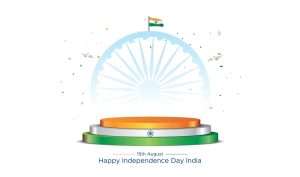Exploring India’s Rich Tapestry of Traditional Crafts

India
India, a land known for its rich cultural heritage, is a treasure trove of traditional arts and crafts that have been passed down through generations. From the intricate designs of handwoven textiles to the delicate artistry of pottery, the country’s diverse regions boast a wide array of artistic expressions that reflect the essence of India’s history, beliefs, and way of life. In this article, we take a captivating journey into the world of traditional arts and crafts of India, exploring the artistic excellence that continues to thrive amidst modernity.
INDIAN VISA FOR ECUADOR CITIZENS
Textiles: The Tapestry of India’s Culture
India’s textiles are a testament to the country’s mastery in craftsmanship. From the timeless elegance of Banarasi silk to the vibrant intricacies of Kanchipuram saris, each region has its signature textile art. The craft of hand block printing, practiced in places like Jaipur and Bagru, produces intricate patterns that tell stories of ancient traditions. Kalamkari, a technique that uses natural dyes to create stunning motifs, is a reflection of the harmony between nature and art.
Pottery: From Earth to Art
Originating in the state of Odisha, Pattachitra is a form of traditional painting that vividly portrays mythological stories and religious themes. Crafted on a canvas of cloth, these artworks employ vibrant colors and intricate detailing, often outlining figures with fine lines and adorning them with delicate motifs. Pattachitra paintings are not just decorative pieces; they serve as visual storytelling tools, preserving the tales of gods, goddesses, and heroes in a timeless manner. Pottery in India is more than just a utilitarian craft; it’s a form of artistic expression deeply rooted in history. The terracotta art of the Indus Valley Civilization provides a glimpse into the earliest forms of pottery in the subcontinent. Today, traditional potters still create exquisite works using age-old techniques. The blue pottery of Jaipur and the intricate designs of Khurja pottery are prime examples of how this craft has evolved over time.
Jewelry: Adorning the Divine and the Daring
Indian jewelry holds a special place in the hearts of art enthusiasts worldwide. From the opulent Kundan and Meenakari work of Rajasthan to the intricate filigree designs of Orissa, each piece is a masterpiece of skill and creativity. Temple jewelry, with its connection to religious traditions, is adorned by deities and brides alike. Meanwhile, tribal jewelry captures the raw and rustic essence of India’s indigenous communities.
Woodwork: Sculpting Stories in Timber
Woodwork in India transcends mere carpentry; it’s the transformation of wood into intricate works of art. The wood carvings adorning ancient temples and palaces narrate myths, legends, and cultural beliefs. The elaborately carved jharokhas of Rajasthan and the detailed wooden ceilings of Kerala’s traditional homes stand as testament to the country’s mastery over this craft.
Metal Crafts: Forging Traditions
The art of metalwork in India is a fusion of creativity and metallurgy. Bidriware from Bidar, with its distinctive silver inlay on a blackened alloy base, showcases the finesse of metal craftsmen. Dhokra art, with its mesmerizing nonferrous metal figures, reflects the spiritual and cultural ethos of tribal communities. The Thatheras of Jandiala Guru continue to craft exquisite brass and copper utensils using techniques passed down through generations.
Folk Paintings: Colors of Tradition
Folk paintings in India are windows into the heart of rural culture and beliefs. From the intricate Madhubani paintings of Bihar to the lively Warli art of Maharashtra, each style is a celebration of the everyday. The Pattachitra paintings of Odisha narrate tales from Hindu mythology with vibrant pigments and intricate detailing, offering a glimpse into the spiritual narratives that define the nation’s culture. This art involves hand-painting or block-printing intricate designs on textiles using natural dyes. The stories of epics like the Ramayana and Mahabharata come alive on sarees, bedspreads, and wall hangings, showcasing the artists’ dedication to their craft and their connection to the land’s history.
Conclusion
India’s traditional arts and crafts are a living testament to the country’s rich cultural tapestry and artistic excellence. These crafts not only embody the heritage of India but also contribute to the livelihoods of countless artisans who have upheld these traditions for centuries. In a world driven by technology and innovation, preserving and promoting these crafts is essential to maintaining the unique identity and artistic diversity of India. As travelers, enthusiasts, and consumers, we have the privilege and responsibility to appreciate, support, and contribute to the continuation of these invaluable artistic traditions.
More articles: Unveiling the Canadian Dream’s Best-Kept Secrets for Work, Life, and Leisure





